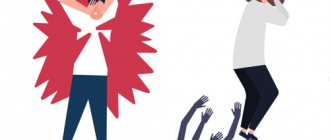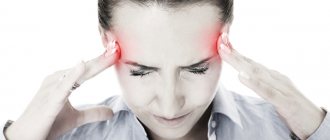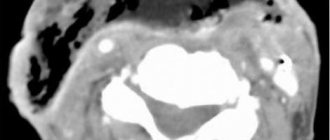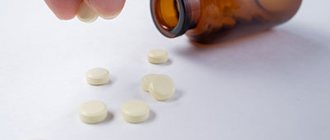Panic attacks in children are a relatively rare phenomenon, occurring in no more than 3% of patients in the general population. The disease is severe, the child suffers from unmotivated attacks of fear and internal anxiety. This creates interference in learning and is met with misunderstanding from peers, which can result in bullying. The symptoms frighten the child and parents and force them to actively look for ways to solve the problem. The search does not always lead people to the right place, i.e. the psychiatrist's office. Parents often turn to all sorts of charlatans: “traditional healers,” psychics, priests, etc., even exorcists. Needless to say, such therapy does not benefit the baby, and the lack of results only aggravates the stress.
To combat the manifestations of panic syndrome successfully, you need to stop taking it for something supernatural. Although this is a rare, but well-studied medical problem.
What you need to know.
- Panic attacks occur mainly in schoolchildren after 7-10 years of age.
- Children who have entered adolescence are automatically at risk, since their hormonal levels change significantly.
- The occurrence of the disease is impossible to predict and difficult to prevent. All that parents can do is to prevent the baby from overtiring and, if possible, reduce the stress on his psyche.
Signs of a panic attack
A panic attack can be motivated or unmotivated. A motivated attack is caused by a real source of fear, for example, a child may react in this way to a scene of domestic violence, an animal attack, etc. This reaction is normal, it is one-time and does not require any special treatment. Show your child to a psychologist so that severe fright does not develop into psychological trauma, that’s all you need. An unmotivated attack is a sign of pathology.
An attack of unmotivated fear can occur in any situation, even when the child is not in danger and is not scared. If this happens, you must consult a doctor immediately.
Symptoms and first signs of panic attacks in teenagers:
- varying degrees of anxiety: from causeless excitement to complete panic;
- dyspnea;
- tremor of the limbs;
- numbness of the body;
- dysfunction of digestion and urination;
- nausea and vomiting;
- dizziness;
- frequency of attacks.
Sometimes an exacerbation of the syndrome can be caused by intercostal neuralgia. During such attacks, breathing becomes difficult, which can be very frightening for a teenager. But in childhood this disease is rare.
Diagnostic criteria
A feeling of discomfort and fear, the manifestation of more than 4 symptoms during repeated paroxysms are the basis for a diagnosis of “Panic attack”. At the first manifestation of the disease, a diagnosis is not made. Also, the diagnosis is questioned if 5-6 of the following symptoms are present: visual impairment, blurred hearing, gait disturbances, cramps in the limbs, numbness of the limbs and temporary paralysis, all-paresis, etc. A single panic attack resulting from a physical or psychological disorder is not interpreted as a disease. overvoltage, as well as getting into a situation where the patient is in real danger. Only with repeated attacks with pronounced autonomic disorders and psychopathological disorders can we talk about the full development of the disease.
Reasons for appearance
There are three types of causes of illness: biological, psychological and genetic. The first include diseases of the internal organs, the symptom of which may be panic syndrome. Most often, this is a malfunction of the adrenal glands, leading to uncontrolled excess releases of catecholamines and general hormonal imbalance. A biological predisposition to a disease is possible, the activation of which requires an external factor: stress, psychological trauma, stressful life circumstances.
The psychological causes of panic attacks in teenagers are all kinds of personality disorders, excessive stress, pressure from parents and teachers, bullying from peers, problems of the transition period, etc. Morbidity rates are rising among children from disadvantaged families. Psychological reasons include the following factors:
- violence in family;
- alcoholism, drug addiction, reduced social responsibility of parents;
- authoritarian education.
Genetic causes are bad heredity. The risk of morbidity increases by an average of 17% in the presence of first-degree relatives who have previously experienced attacks. However, the genetic factor may or may not appear, so the causes of morbidity are best considered in their entirety.
The psychological factor often acts as a trigger, activating other predispositions of the body. Without it, the disease may never arise, even if all other prerequisites for its development exist.
Diagnostic evaluation of injury
For parents
- Make a family tree in which you indicate the names and ages of all relatives: mother, father, brothers, sisters, etc.
- Select who currently lives with the child.
- Which relatives does the child visit, and who lives in that area?
- Does the child communicate with both parents? If this is not the case, then what is the reason, and how long have the parents not communicated with each other?
- Have there been any recent events in the child’s life: serious illnesses, injuries, injuries, death of any parent or loved one; parents divorced; one of the parents left home; one of the parents is in the army or has been in prison.
- Have you previously contacted the guardianship service? If so, why?
- Have there been any cases of enforcement action by law enforcement agencies? If yes, then for what reason?
- Do either parent's records indicate physical or sexual abuse, mistreatment, or social services as a child?
- Is there a risk that children in the family may be subject to emotional, physical or sexual abuse?
- Have there been any previous cases of physical or sexual abuse of the child?
- Does either parent have an alcohol or drug addiction?
- Is any of the parents registered at a psychoneurological dispensary?
- Is there a family history of violence? If so, was the child exposed to it?
- Did anyone in your family, acquaintances, or neighbors make your parents feel uneasy? If yes, for what reasons?
For a child
- Does anything make your child feel anxious or irritable?
- Is the child afraid to come home, to school, or to communicate with neighbors? If so, why?
- Does your child often look sad? If yes, for what reason?
- Gently ask the child, using words he understands, about whether there have been cases of touching or damage to his private parts by anyone.
- Ask your teen if they have had sexual contact or been sexually assaulted without their consent.
- If a child causes problems, what happens? Do they beat him for this, punish him, push him? If yes, then how?
- What happens when parents fight? Has the child observed anyone being violent towards their father or mother?
Consequences of panic attacks in children and adolescents
An attack can overtake a person at any time, for example, in a potentially life-threatening environment, in a public place, during an important event, etc. This gives rise to another mental disorder - anticipation syndrome. The child is afraid that an attack is about to happen, and is constantly waiting for it. Many patients are afraid to leave the house and, as a result, cannot live a full life. This is especially dangerous for a child, because he is at the stage of intensive physical and psycho-emotional development, must move a lot, communicate a lot, and constantly gain knowledge and experience. Turning him into a recluse at this period of life is disastrous.
Panic attacks in teenagers are perceived especially acutely by them themselves, when they are so full of problems against the backdrop of a strong hormonal surge. He begins to feel almost disabled at a time when it is very important to prove himself, take his place in society, and learn to communicate with the opposite sex.
Epidemiology and risk factors
The prevalence of PTSD among adolescents and children is complex. Recent studies have shown that the prevalence of PTSD ranges from 5.3% to 98%, and depends on the type of traumatic event. The highest numbers belong to adolescents and children who were victims of political persecution, survivors of war or repression. Lower - for children who have suffered serious illness or injury.
Modern society, unfortunately, exposes children to the risk of being psychologically traumatized in almost any place - this could be a school, a public place, or their own family. Millions of children become victims of violence, cruelty, witness death, and terrible tragic events.
Post-traumatic stress disorder due to traumatic events develops more often in children than in adults. And the absence of this mental disorder in childhood does not mean that it will not manifest itself in the future - the risk of psychological abnormalities, as well as serious health consequences, increases many times over. Meanwhile, it has been noted that the number of PTSD symptoms directly depends on how often the teenager was exposed to traumatic events. Those children who have only experienced one event will have much fewer symptoms than adolescents who have been exposed to it more than once. But in girls, PTSD can occur even after one single psychological trauma, and this happens more often than in boys.
Classification of panic attacks in childhood
Depending on the number of manifestations:
- Large (full-scale) attack - four or more symptoms.
- Minor attack – less than four symptoms.
Depending on the prevailing manifestations:
- Typical (vegetative). Symptoms such as increased pulse and heart contractions, spasms, nausea, and fainting prevail.
- Hyperventilation. Main manifestations: increased breathing, reflex cessation of breathing.
- Phobic. phobias predominate . Fear arises in situations that, according to the patient, are dangerous and can provoke a panic attack.
- Affective. They manifest themselves in the form of depression, obsessive thoughts, constant internal tension, melancholy and angry states, and aggressiveness.
- Depersonalization-derealization. The main symptom is detachment, a feeling of unreality of what is happening.
Panic attacks: how to deal with it yourself
We categorically do not recommend self-medication. Such events aggravate the patient's condition. He cannot independently determine whether he has concomitant mental disorders.
Pharmacology taken uncontrolled can provoke an increase in symptoms and make the patient’s condition more severe. This complicates further therapy in the hospital, increases the time of recovery and complete restoration of the body. The Clinic of Dr. Isaev provides round-the-clock care for patients in serious condition who, due to mental disorders, are unable to care for themselves.
Panic Attacks: Triggers, Symptoms and Treatments
Psychotherapist Mintimer Missarov explains what panic attacks are, who they most often happen to, and how to effectively treat attacks. And at the same time he explains why the technique of “breathing into a paper bag” can only worsen the condition.
A panic attack is an acute attack of very strong fear that lasts several minutes, but completely knocks the ground out from under your feet. Usually a person is afraid of death, afraid of going crazy or losing control. This condition is accompanied by various physical sensations: rapid heartbeat, feeling of lack of air, sweating, chills, dizziness and others.
Despite the fact that during a panic a person may feel like he is dying, PAs are not dangerous to health. Especially if a person seeks professional help and gets rid of the root cause.
During PA, the body actively produces adrenaline and the stress hormone cortisol. Some scientists also consider the role of orexin in triggering this process. The peak of the attack may last several minutes, but discomfort and fatigue may continue throughout the day.
View this post on Instagram
Publication from PSYCHOTHERAPIST MOSCOW AND








